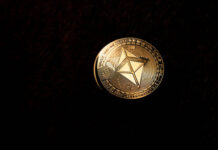Markets
Trading in Asia and during the morning session in Europe was one long-drawn countdown to US inflation data released this afternoon. Over the previous days we often had to mention that there wasn’t really much of hard news to guide trading, but this obviously changed this afternoon. US January inflation data brought a substantial upward surprise, suggesting that the easiest part in the inflation deceleration might have passed. US headline inflation accelerated from 0.2% M/M to 0.3% (0.2% was expected), slowing the Y/Y measure from 3.4% to 3.1% (vs 2.9% hoped for). From a monetary policy point of view the development in core inflation (0.4% M/M and 3.9% Y/Y from 0.3% and 3.9% vs 3.7% expected) probably should be given even more weight. This underlying dynamic won’t give the Fed the comfort it is looking for that inflation will sustainably return to target fast enough to cut rates anytime soon. In this respect the reacceleration of services inflation (0.7% M/M from 0.4% in December) is worth mentioning. In logical reaction, markets further push back the expected timing of a first Fed rate cut. The probability of a first rate cut in May is scaled down from 70% yesterday to about 40% now. A ‘meagre’ first 25 bps step for June is just left intact. Further out US yields are decisively jumping beyond the YTD peak/resistance levels, adding between 11 bps (2 & 5-y) and 6.0 bps (30-y). German yields only follow the US at a long distance, rising between 6 bps (2-y) and 0.5 bps (30-y). The return of the higher for longer narrative also caused a blow to the perfect soft landing scenario that equity investors were embracing. The EuroStoxx50 was already in correction modus in the run-up to the US CPI release and currently cedes about 1.5%. US indices open up 2.0% lower (Nasdaq). Sentiment turning risk-off and the Fed having plenty of time to wait as the US economy shows much more resilient than the likes of the EMU, proves to be a perfect world for the dollar. DXY breaks above the 104/104.50 area. EUR/USD struggles not the give away the 1.0724/12 area, probably in vain.
This morning. UK labour market data also surprised to the strong side of expectations. The unemployment rate declined from 3.9% to 3.8%. The UK economy continues to add jobs (48k estimated in January) and wage growth slowed less than expected in December (ex bonus 6.2% Y/Y VS 6.0% expected). Resilient UK labour data allow UK yields to trade more or less in lockstep with the US. Cable post the US CPI (more than) reversed intraday gains (currently 1.26). Still, the UK currency outperforms a wounded single currency. EUR/GBP is testing the 0.85 big figure, with the 0.8492 2023 low now at risk of being pierced.
News & Views
The Swiss franc underperforms G10 peers today. EUR/CHF rises to the strongest level since mid-December at 0.948. That’s up from yesterday’s close of 0.943. CHF has been losing ground steadily since end of January amid rising expectations the central bank may cut rates sooner than the likes of the ECB and Fed. Today’s January inflation data reinforced the idea. Headline prices rose by 0.2% m/m only to be up 1.3% in yearly terms. The latter is a further deceleration from the 1.7% in December. It also comes as a surprise, defying expectations for a status quo amid increased regulated prices for electricity and a VAT increase. These were also some of the arguments why the SNB expected inflation to average around 1.8% in the first quarter this year. The January reading sets the stage for another downward revision in the next forecasts. Core inflation fell by 0.3% m/m, bring the y/y reading to 1.2%. It’s the slowest pace since January 2022. While it’s unsure the SNB will effectively start cutting in March already, markets did add to the probability of that happening. The scenario is given a +/- 70% probability compared to 40% just yesterday. A cut in June – the SNB meets quarterly – is in any case more than fully discounted.
The EU yesterday adopted a law to set aside windfall profits made on the frozen Russian central bank assets. Some 300bn euros of Russian central bank assets were blocked following the invasion of Ukraine. Two thirds of that are in the EU with the majority of that held in Belgium’s Euroclear. The law is a first concrete step in funneling Russian money to finance Ukraine’s post-war reconstruction and is estimated to generate about 15bn euros over the next four years. While the likes of the US called for confiscating the assets outright (not just the profits), EU officials consider such a move as legally too risky.













